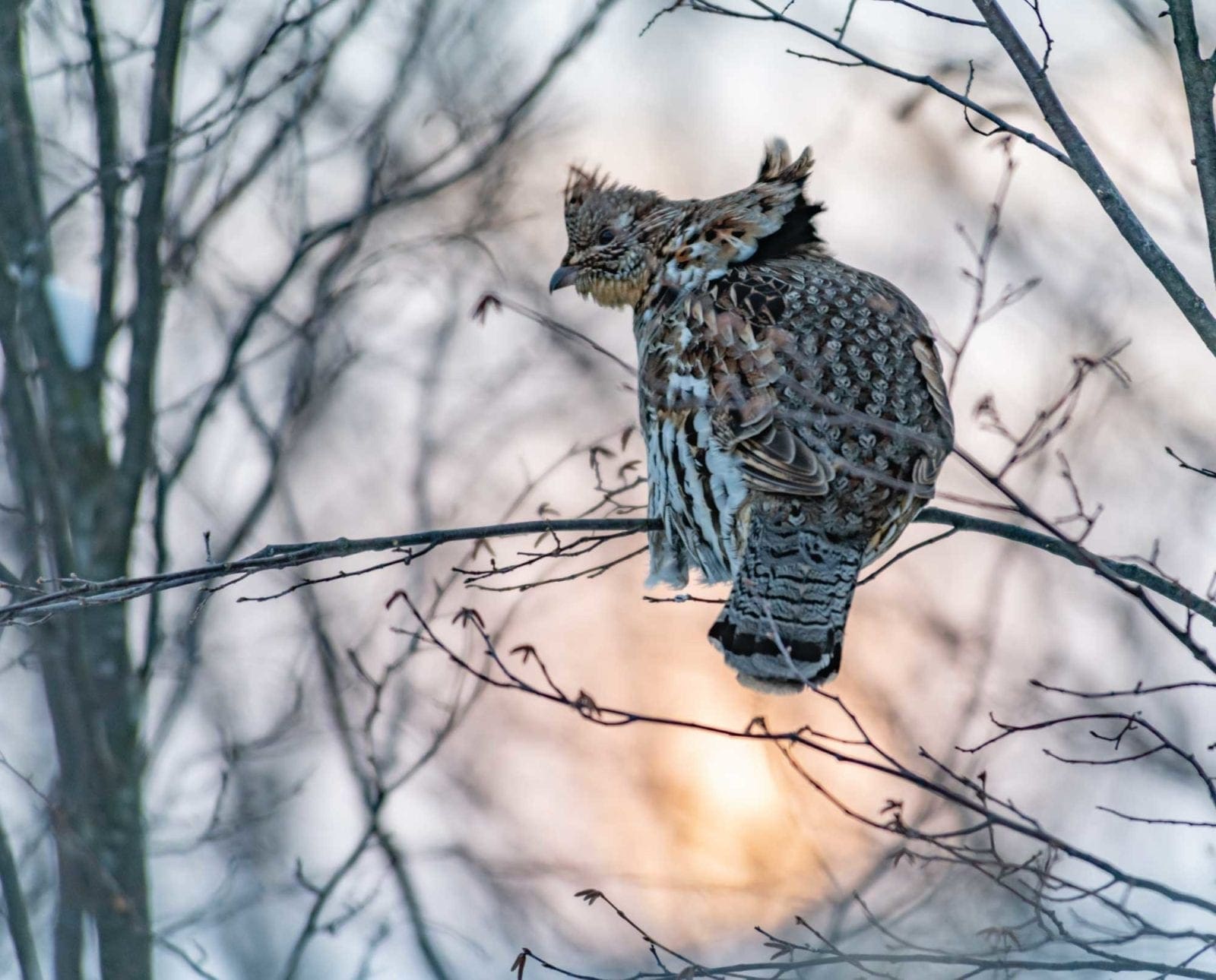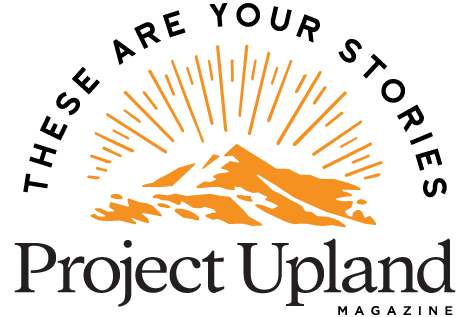Home » Conservation » Science Can Save the Future of Upland Game
Science Can Save the Future of Upland Game

A.J. DeRosa, founder of Project Upland, is a New England…
The opening letter of the Spring 2021 issue of Project Upland Magazine
Science-based management is something the hunting community has touted as the proper way to address conservation issues in America. The idea being to leave emotions out of our season dates, bag limits, and management practices. Far too often science can fall victim at the ballot box and is an all too tempting proposition to politicize. Science is the method our biologists and other gatekeepers use to combat what seems to be a never-ending decline in our natural world including our beloved game birds.
Personally, I love science, it’s not subject to someone’s opinion, but merely a factual process that is peer reviewed, challenged, and confirmed by other qualified scientists. I would argue that scientists are some of the most important people in our society. Their quest rather noble. It finds problems, fixes problems, and advances us as a civilization over time.
What if I told you we could have the greatest positive impact on upland game birds by embracing science and solve more in the next seven years than we have in past decades? What if I also told you this idea can be mainstream and result in more habitat creation than we could have imagined in our lifetime? As a believer in science-based management it’s a no brainer, “tell me more!”
We could achieve things like bringing working forests across the North American landscape to a scale that we never thought possible. Create more CRP than we could have ever imagined. Help stop the spread of invasive cheatgrass in its tracks. Push back on the destruction of the sage steppe habitat by halting conifers from overtaking these native landscapes. And even increase nesting success of various game birds in the future.
Have you guessed the scientific movement I am talking about yet?
It’s combating the effects of climate change.
When it comes to upland game birds and climate change, rising temperatures in key parts of America reveal two major points. One is the problem and the other is the solution.
The problem is the onslaught of things mentioned above like invasive plants degrading native habitat, changing weather patterns that affect nesting and wintering, and the spread of disease. The solutions, now embraced by mainstream society, which contain many parts, also include the increase of working forests and the expansion of CRP to curb carbon in our atmosphere. Both practices creating amazing opportunities for more habitat, the only defense these birds have against this grim future.
You might have caught my mention of “seven years” earlier in this letter. That reference is to the Climate Clock in Time Square NYC that marks just under seven years and counting to when climate change is no longer reversible. As a result, this movement could be the fastest, and greatest, push forward for habitat creation of this century.
From data research into Project Upland I know that 91 percent of the people reading this believe climate change is real. And with good reason as an overwhelming 98 percent of studies published by scientists support climate change and of the 2 percent remaining, they either contained errors or could not be replicated. In fact, it’s not even a new idea. The effects of greenhouse gases were first discovered in 1896 and over the past 125 years we have begun to obtain a greater understanding of what climate change is.
The irony that any hunter would push back against climate science is rather shocking. But when looking outside of the Project Upland community a significant number of hunters do not believe in climate change and even more damning is many hold positions of power in our very industry despite claiming to believe in science-based management practices. As a community we must arm ourselves with the scientific facts, expand information sharing on the topic, and reach out to those leaders to embrace science.
Project Upland is committing to increase media coverage on the science around climate change and upland game birds in North America to arm our community with the proper information to propel this incredible opportunity to increase habitat and biodiversity across the uplands. We will seek to raise awareness around those on the very cutting edge of science for these birds and even help with some funding of research along the way. The impending doom of both the decline of game birds and climate change are evident in just one lifetime. If we can ever truly sustain the upland lifestyle this topic is the line in the sand.
A.J. DeRosa, founder of Project Upland, is a New England native with over 35 years of hunting experience across three continents. His passion for upland birds and side-by-side shotguns has taken him around the world, uncovering the stories of people and places connected to the uplands. First published in 2004, he wrote The Urban Deer Complex in 2014 and soon discovered a love for filmmaking, which led to the award-winning Project Upland film series. A.J.'s dedication to wildlife drives his advocacy for conservation policy and habitat funding at both federal and state levels. He serves as Vice Chair of the New Hampshire Fish & Game Commission, giving back to his community. You can often find A.J. and his Wirehaired Pointing Griffon, Grim, hunting in the mountains of New England—or wherever the birds lead them.




If science is so important, why did RGS get rid of its biologists?
Hey Mark, while I believe science is very important to the future of hunting, and I know RGS feels the same, but I can not speak for RGS as we are not the same organization. Although I do believe that a lot of sound decisions were made by RGS to further the idea of direct and measurable creation of grouse and woodcock habitat on larger and more sustainable scale. RGS has, for a long time, supported scientific research like the Eastern Woodcock Migration Research Cooperative rather then direct research from staffed biologists, which is not a practice they did. It is unfortunate as there were truly some talented and dedicated individuals that worked in that compacity for RGS that furthered the org in so many special ways. They will always be missed.
I fully support this article and would welcome more articles with suggestions on how we can meaningfully contribute to this goal.
HEAR, HEAR! I second Ryan’s reply. Hunters, conservationists, environmentalists have common ground to work on.
I agree we should use scientific knowledge in our goal to combat climate change and sustain wildlife. However, I reject the idea that “working” forests and CRP are the best ways to approach this issue. Firstly, relatively natural working “ecosystems” are a better option for long-term carbon storage and wildlife habitat. “Working” forests typically are thinned or logged, with roads being built or re-opened to accomplish such work. Many times, this results in forest plantations, rather than a forest with complex vegetation structure that is so important to many species. Forests have tended to endure through time and they should be given protection and more natural process-based management than simply becoming “working” forests. Secondly, although CRP is not a bad thing in itself, it results in little long-term storage for carbon and is often short-lived in habitat improvement. Many acres previously in CRP in my area of southeast Idaho have been plowed and converted back to a dry land wheat mono-culture. Even multi-year contracts can be rescinded under “emergency” conditions. We need something better and more permanent. For what taxpayers have paid over the years for CRP contracts, we could have bought much of that land and permanently restored it to a more natural, wildlife-friendly condition. As a bonus, if it was publicly-owned, hunters would have much better access. While I agree with the premise of your article, I think we need to carefully consider the restoration policies proposed. Cheers, Greg
Of course we’re painted in a corner here. To disagree in any extent will likely bring down the rains of wrath. Having dabbled in science for a few years, I will begin simply by stating that “science has been wrong, occasionally”. Currently, it is just as likely to provide proof for the side that pays for its results. I’m more likely to wander in the direction of provable science, just not willing to rush head-long.
I’m sorry “Greg” but if you were actually FROM Idaho or the inland NW you might know that this area has a high fire regime – prone to fires. The pristine, old growth, forests that is the panacea of west-coast fantasy is merely that – fantasy. Plenty of proven research shows that properly managed forests – proper to its geographic location, etc – is healthier for the trees and wildlife. Sure, taken to the far-left extent as it is done in many European countries, forest crop land can develop poor supportive vegetation. I didn’t read that proposal into the article’s original intent.
Yes, CRP could be done better. However, let us not forget, land that has been minimally productive is what is generally placed in CRP. The naturally occurring vegetation for this region is very slight and, without water, would not support, to any great extent, many of the wild game you may enjoy. Vast prairies of grass and herb is not what you can expect if it is allowed to return to its original state. IF – that is, indeed, even possible. We must also realize that these lands belong to folks that wish to make a living from the land they own. “As a tax-payer”, I wish I had a dollar for every time that statement was ignorantly used. Who, then, should pay for land-use that satisfies others? The landowner? Farming/ranching is a very noble and, for most Americans, necessary endeavor. Even for those of us that have some acreage, there remains plenty of food stuffs that we need to purchase. If someone wants something done with the land, buy it! At least find a way to make a preferable land-use profitable. Please do that before all of the northwest is closed off by the intruding masses. The idea that everything can be left to return to a natural state, everywhere, and sustain the current human population – and to a large extent, that of several wildlife species – is ludicrous.
I’m in total agreement with Mr. Guynn and, by that, I mean his ENTIRE comment. Not wishing to put words in his mouth, I will say that proposing anything as grand as, “Reduce Carbon Emissions” without providing a workable processes is grand-stand rhetoric. It’s very easy to run with a cause; to identify what’s wrong with the world. It’s an entirely different process to provide workable solutionS. Note the upper-case “S”. There is no single solution to issues thus involved. The environment is a HUGE undertaking and there is more at stake than some folks seem to recognize. Mass numbers of starving people and a nation’s economic collapse is the far end of the balance. Somewhere, in between, lies the answer – all things in moderation.